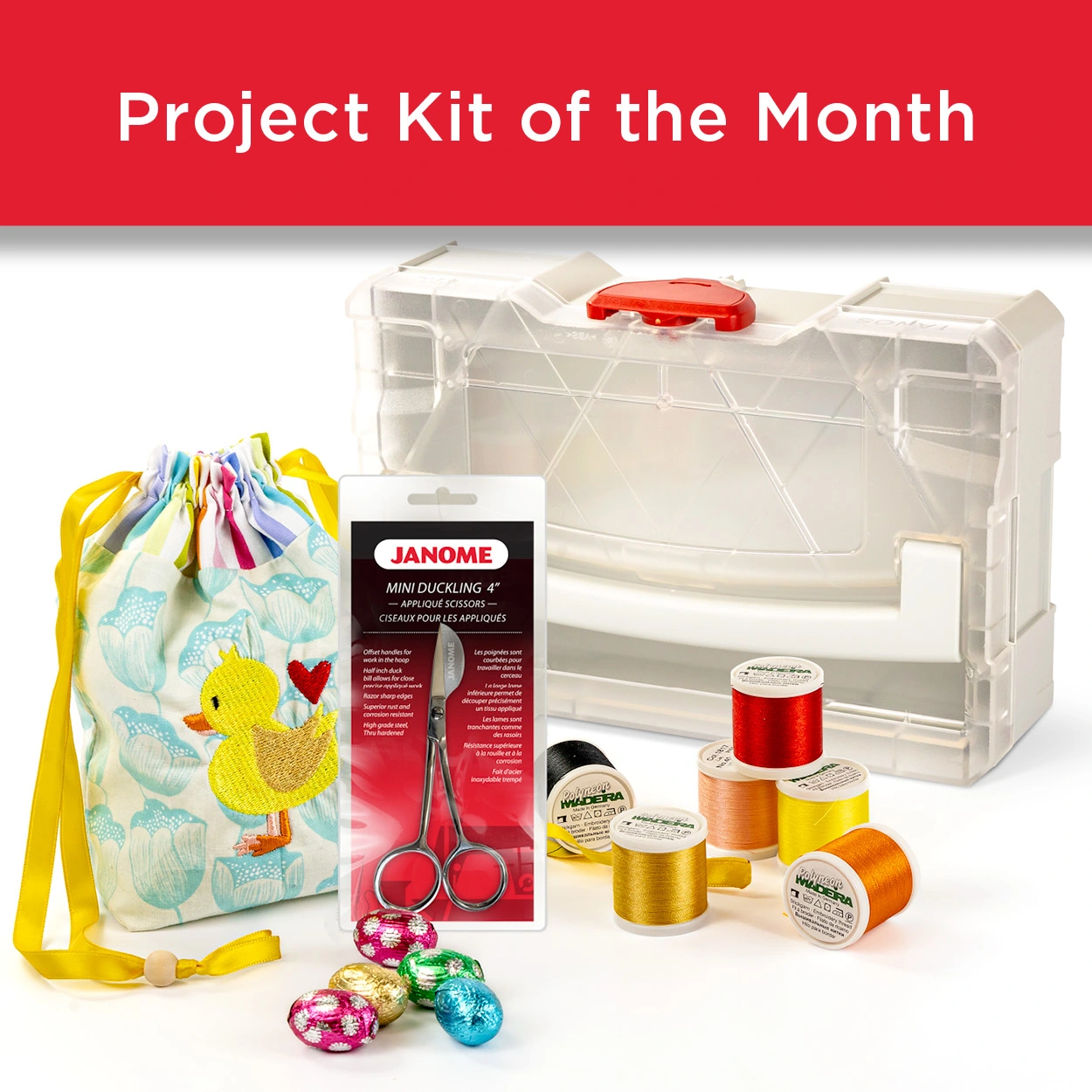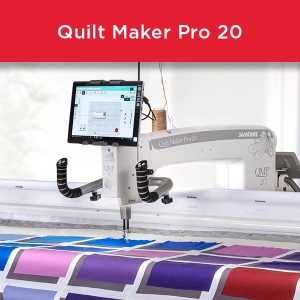
I received an exciting delivery last week…
…let me give you a hint… it rhymes with glowing sashine.
That’s right, I got a new sewing machine. (Eeeeeee!!!)
I can’t wait to tell you more about it, although first I need a little more time to fully get to know my new best friend. I haven’t named it yet even. (Do you name your sewing machines?)
One of the things I vow to do better with this sewing machine was rather than just jump right in, I want to really understand everything the machine is capable of. This one has a lot of features. Sometimes I don’t use my sewing machines to their full extend because I don’t even know all that they can do.
This new machine has 240 stitches alone. I really want to make sure I use more of them and so this week I decided I needed to take on sampling all the stitches.

Quite literally I set about sewing a 9 inch section of each of the 240 stitch patterns my machine has available.
The process may feel a little repetitive but it really allowed me some time to get to know my new sewing machine. I was grateful to spend time doing that on a sample piece rather than figuring out the little nuances of the machine on a special project.
I really liked getting to know all the stitches. There are so many I’m excited to try and figure out a way to incorporate into my sewing endeavours.
This machine even allows you to program the stitches!

For this project, I used 10 x 10 inch pieces of quilting cotton.
When use some of these stitches on projects, you would use stabilizer. I liked that I didn’t use stabilizer for this sampler because it really showed me how the stitches would perform with a lightweight cotton.
There are several groupings of stitches on this machine and so I tried to keep the groups together.

Here are a few tips for making a stitch sampler:
- Take the extra step and label/number your stitches so you can find them later when you are looking for a particular stitch.
- Load your bobbin! I went through over a bobbin and a half making my stitch sampler. Prep your thread and you’ll have a successful, uninterrupted stitch session.
- Use a high contrast colour between your fabric and your thread so the stitches are clear and easy to see.
- Use a solid colour fabric so you don’t lose the stitches in a pattern or design.
- I’ve seen some people organize their stitches in a binder, between clear plastic sleeves. However you decide to organize your stitches, just make sure they are somewhere you can access them easily. I’ll keep mine with my sewing machine manual (as I know I’ll be referencing that a lot over the next while!).
Have you ever made a stitch sampler? How do you get to “know” a new machine Let’s be honest here, after all, we’re among friends… tell me, do you name your machines? What is your current machine’s name?









I have a Viking Diamond which I absolutely love. I made a sampler on muslin to see all the different stitches my machine offers too. I cut my muslin 22″ (half width of fabric) and used an inexpensive interfacing to stabilize. I plan (sure I will) on making a book but for now, and the last four years, I keep all the pages on a skirt hanger.
To see all the options stitched out, shows that no mini pic does the stitch design justice. I also STRONGLY suggest stitching a handful of your choices in the largest possible size. It is a great demonstration of all that you can do with your machine. For example a row of the balloons was really cute, but when I made a row of the same balloons giant size up the margin of my sample, I was truly WOWED.
LikeLike
Thanks for sharing Jamie. The skirt hanger display idea is a good one!
Happy Sewing!
LikeLike
Don’t just store those stitch-outs. Treat them like “fabric” and make a cover for your machine. A simple one that just slips over is perfect for showcasing those stitches. Just measure the length, width, and height of the machine, layout the blocks to your desire, stitch together or applique them to batting and backing, use elastic or ties at the ends, and drape over machine when not in use. A Google search will give you lots of ideas on machine covers.
LikeLiked by 1 person
Oh that’s a cool idea! Thanks for sharing!
LikeLike
Yes, I name all my machines (love it!), check out my blog to view “Calypso” –
http://cynthiarunswithscissors.blogspot.com/2013/11/goodbye-janome-12000-hello-janome-15000.html
I have made stitch samplers and they are wonderful – very similar to printing out fonts for the computer.
LikeLike
LOVE your Calypso!
LikeLike
Hi Trina, Which Janome did you get? Always exciting playing with a new toy👍😊. Brenda
LikeLike
Hey Brenda! Since you asked… 🙂 It’s a Janome Skyline S7! It’s been out for a little while now (you can read more about it here on this Janome Life post: https://janomelife.wordpress.com/2015/11/20/introducing-the-s7-a-welcome-addition-to-the-skyline-series/) but I’m very, very excited about all the options and capabilities of this machine.
LikeLike
I have an Elna 940 4 needle embroidery machine. It’s made by Janome. I always say “thank you Ellie” after she completes a project.
LikeLike
I love this!!! Ellie sounds like a wonderful sewing companion.
LikeLike
Good idee, I am new to this machine and don’t know the half of it, specially with the iPad that came with it.
LikeLike
Let me know if you decide to make a stitch sampler, Betty! Better yet – share photos of the project on our Janome Facebook page: https://www.facebook.com/JanomeCanada/
LikeLike
I’m a Janome dealer. I’d recognize those super fun stitches anywhere. You’re going to love your “sashine”:) I’m excited to see what you’ll make!
LikeLike
I’m totally in love with these stitches! Particularly some of the decorative ones. Thanks for getting my little “joke.” LOL!
LikeLiked by 1 person
I made a stitch sampler for my 15000. What a handy and quick reference to see all the stitches my machine is capable of. It also allows you to dream up new stitch combinations. Well worth the time to stitch out.
LikeLike
It really helps to see the breadth of all the stitches, doesn’t it! How did you end up storing your finished stitch reference guide?
LikeLike
Actually, I did the same thing when I got my new Janome 8200 this spring. I made a sampler of most of the stitches, but I made a sandwich with backing and batting to do it. I refer to it all the time! My only complaint is that I have no use whatsoever for the “foreign” alphabet that is included in some of the modes. Wish I could get rid of them and swap them out for something else. I love my machine, but hadn’t even thought of naming “her”!
LikeLike
Ah yes!!! I thought about using batting and a backing. I bet yours looks amazing! I was thinking that a lot of these stitch patterns I might use for finishing garments, so I wanted to see how they played on a lighter fabric. But I’m sure I’ll use lots of them for quilting, too. Would love to see a pic of your sampler!! If you get a chance, post it to the Janome Facebook page: https://www.facebook.com/JanomeCanada/ where we have a link to this blog post.
LikeLike